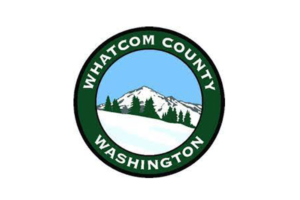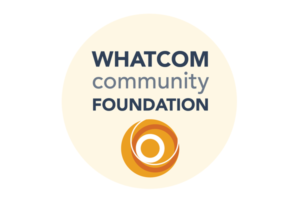Local Agriculture Market Programs (LAMP) are transformative grants in the good food sector. They provide an influx of money for large-scale projects that support the development, coordination, and expansion of direct producer-to-consumer marketing, local and regional food markets and enterprises, and value-added agricultural products. We often recommend these grants to our clients to help them realize their vision.
The USDA recently released the request for applications for the 2025 fiscal year. Keep reading to learn about the differences between the programs, how to determine which track is best for you, and what you need to prepare your application.
Overview of the LAMP Grant Programs
The USDA recently released the request for applications for the 2025 fiscal year. In its inaugural year, 2014, the USDA invested $27 million in these programs. While the total award amount soared to $133 million during the pandemic, this year, it will be $26.5 million. The LAMP grants were announced later this year to reflect the priorities of the new administration, as outlined in Section 1.2 of each RFP.
There are three LAMP programs:
- Farmers Market Promotion Program. FMPP’s purpose is to support the development, coordination, and expansion of direct-producer-to-consumer markets to increase access to and availability of locally and regionally produced agricultural products.
- Local Food Promotion Program. LFPP’s purpose is to support the development, coordination, and expansion of local and regional food business enterprises to increase access to and availability of locally and regionally produced agricultural products.
- Regional Food System Partnerships. RFSP supports partnerships that connect public and private resources to plan and develop local or regional food systems.
Each program is further divided into subcategories with corresponding award amounts.
Planning/Capacity Building Grants are typically used for completing a:
- Feasibility Study to determine the viability of food system ideas
- Business Plan to establish a concrete plan for launch and implementation
- Strategic Plan to illustrate how partners will work together to address a need in the community
Implementation Grants are used for:
- Developing/expanding programs that already have a strong plan in place
- Cultivating new retail/wholesale channels
- Improving food system infrastructure (technology, transportation, processing, storage)
- Expanding responses to food system challenges
Turnkey Marketing and Promotion: This is for specific activities that support the marketing and promotion of intermediated producer-to-consumer market opportunities. Applicants must select a minimum of 3 pre-defined activities listed below:
- Identify and analyze new/improved market opportunities
- Develop/revise a marketing plan
- Design/purchase marketing and promotion media
- Implement a marketing plan
- Evaluate marketing and promotion activities
Turnkey Recruitment and Training: This is for specific activities that support the marketing and promotion of intermediated producer-to-consumer market opportunities. Applicants must select a minimum of 3 pre-defined activities listed below:
- Identify and analyze new or improved strategies for vendor and producer recruitment and training
- Develop or revise strategies or plans for recruitment and training
- Design materials for recruitment or training
- Implement plans for recruitment or training
- Evaluate outcomes related to recruitment and/or training
| Farmers Market Promotion Program (FMPP) | Local Food Promotion Program (LFPP) | Regional Food System Partnerships (RFSP) | |
| Planning Grants | Capacity Building projects range from $25,000 to $250,000 over 24 months | Planning projects range from $25,000 to $100,000 over 24 months | Planning and Design projects range from $100,000 to $250,000 over 24 months |
| Implementation Grants | Community Development Training and Technical Assistance projects range from $100,000 to $500,000 over 36 months | Implementation projects range from $100,000 to $500,000 over 36 months | Implementation and Expansion projects range from $250,000 to $1,000,000 over 36 months |
| Turnkey Marketing and Promotion | Grants will range from $50,000 to $100,000 over 24 months | Grants will range from $50,000 to $100,000 over 24 months | NA |
| Turnkey Recruitment and Training | Grants will range from $50,000 to $100,000 over 24 months | Grants will range from $50,000 to $100,000 over 24 months | NA |
What LAMP Grant Programs Support
LAMP grants are intentionally designed to adapt to unique projects in regions nationwide. They emphasize collaborations, recognizing that successful food system improvements require the input of a wide range of stakeholders. One advantage of LAMP grants is that they are available to both for-profit companies and nonprofit organizations.
While this is not an exhaustive list, these are the types of projects funded by the USDA that we have helped support over the years.
| FMPP | LFPP | RFSP |
| Establishing or expanding producer-to-consumer networks on a regional, state, or national level | Carrying out one or more local or regional food supply chain activities (aggregating, processing) to meet local demand | Develop and build community connections (public and private) that allow a region to engage in activities that drive the discovery and promotion of collaboration within the food system |
| Marketing assistance for producers to consumers | Exploring the development of value-added agricultural products | |
| Providing technical support for small/mid-sized producers to become compliant with regulatory and buyer standards to increase their direct market opportunities | Outreach, training, or technical assistance (e.g. operating shared kitchens, etc.) | Prioritize strategies and innovations that fill food systems gaps, meet stakeholder needs, and facilitate market opportunities and food access solutions |
| Market analysis and strategic planning for a direct producer-to-consumer market opportunity | Planning stages of establishing or expanding a local/regional food business in a community |
Are you ready to apply? A checklist
All three LAMP grants are due on June 27, 2025. Whether you are considering applying this year or in the future, this checklist will help you prepare to submit a well-thought-out application.
- What else is happening in the community that is synergistic with and/or will support your project? It’s always beneficial to align projects with other community priorities and potential funding sources.
- What is the need that this project is addressing? How is your project building the local economy or improving access to local food? Ensure you can connect the challenge to your proposed solution.
- Who are your project partners/stakeholders? Who will be involved? LAMP projects should not be sole ventures. They should involve various stakeholders representing those who will be impacted and whose support is important for project success. Partners should include a combination of the following types of entities:
- Food-Related Businesses: Those that will contribute to a key component of the project and those that make up the food environment landscape.
- Community Organizations/Nonprofits: Those that work with project beneficiaries.
- Public Officials: Those who can leverage capital, policy, and development priorities.
- Education Institutions (schools, universities, training programs): Those that provide related education, technical assistance, and workforce development.
- Funders/Foundations: Those that provide financial investment and want confidence their money will be effectively spent.
- End Users: Those who will utilize the facility in some capacity (entrepreneurs, farmers, buyers, etc.).
- What are the intended outcomes? Do they respond to community needs? Your proposal should include stated metrics that you will attain, which meet the USDA’s desired outcomes and directly address the stated community need.
- What is your organization’s capacity to implement a grant reward? AMS noted that this year, they will review applicants’ risk management of federal funds. Ensure that your organization has the necessary capabilities to implement the project and meet the requirements outlined in Section 6.3.1 of the RFPs. If necessary, include personnel and expertise in the proposal budget.
Other Resources
Want to learn more? We’ve gathered some resources and tools (some we’ve created) to help you further develop your idea and proposal.
- USDA has not posted any new webinar dates; previous recordings can be viewed here.
- The Food Corridor hosted webinars in 2021 with valuable information. One was led by Samantha Schaffstall from USDA-AMS and Bill Seretta from Fork Food Lab, a prior grant recipient. Another was led by New Venture Advisors about how the different LAMP grants can be used to start or expand a shared kitchen or community food center.
- Previous recipients: Visit USDA-AMS to review prior awarded projects for FMPP, LFPP, and RFSP.
- Visit our Toolsite for widgets that can help you refine your plan, e.g., evaluate profitability potential or how well-suited an existing facility might be to your vision.
- New Venture Advisors created a Readiness Rubric, a framework to help you create a directional map of your strategy, capacity, partnerships, funding, etc. that will feed right into your grant application.
- Visit our blog for many helpful articles about food system infrastructure development and food system planning.
Image: Mintr / Shutterstock



